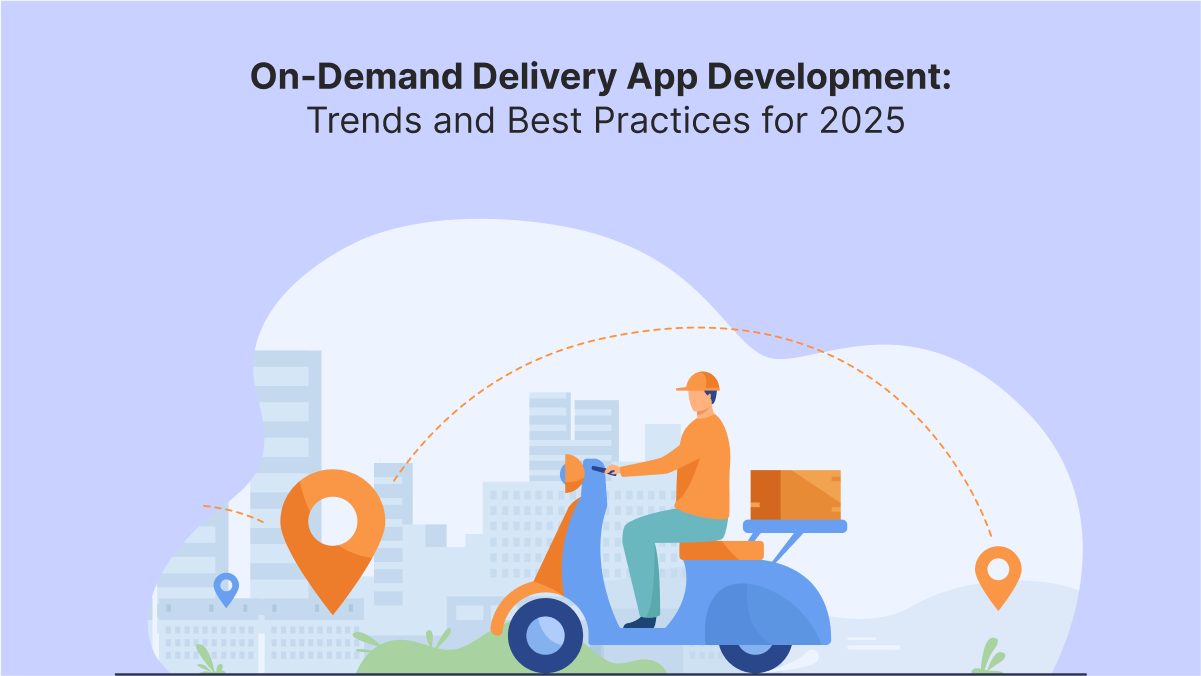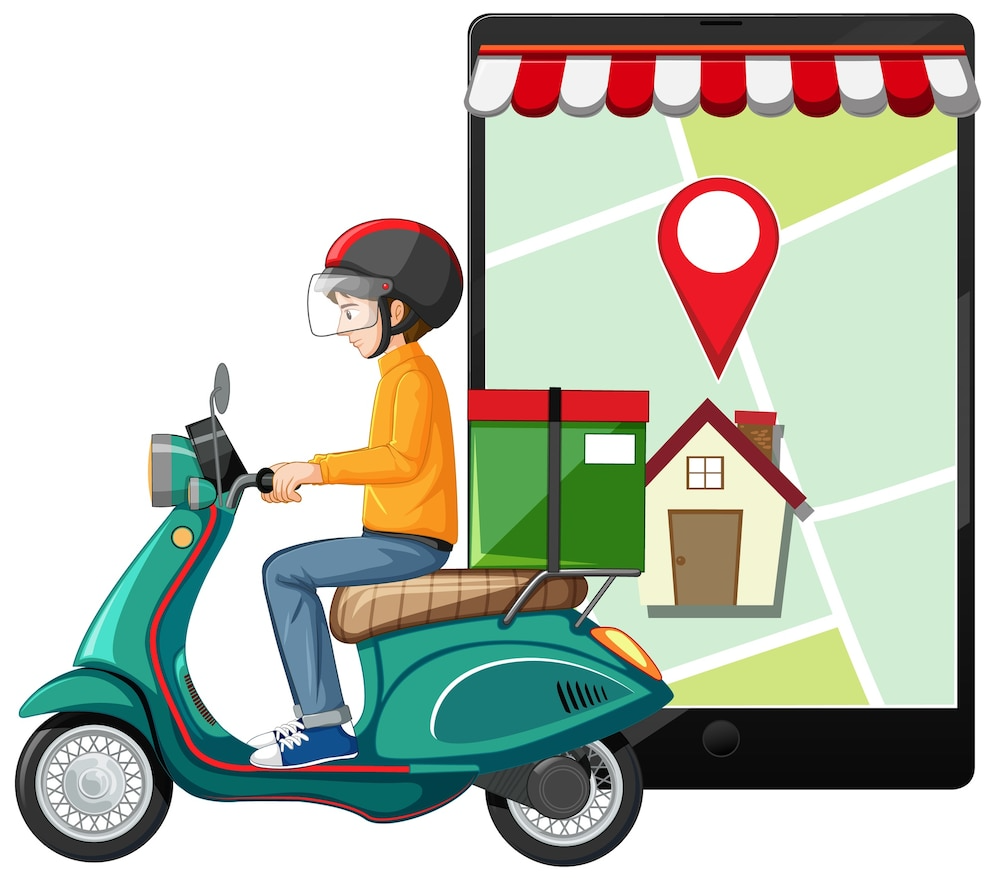On-Demand Delivery App Development: Trends and Best Practices for 2025

The on-demand delivery industry has experienced rapid growth over the past few years. From food and groceries to medicines and courier services, people now expect fast, reliable deliveries at their fingertips. With the continued growth of e-commerce and mobile usage, on-demand delivery app development is becoming more advanced and essential.
If you're planning to build a delivery app in 2025, it's important to stay up to date with the latest trends and follow industry best practices. This blog will help you understand what’s shaping the future of on-demand delivery and how you can create a successful app that meets customer expectations.
Understanding the On-Demand Delivery Ecosystem
Before diving into the trends, it helps to understand how on-demand delivery apps work. These platforms connect users with businesses and delivery agents, often through a multi-sided marketplace model.
Core Components of a Delivery App
- User app for placing orders
- Delivery partner app for accepting and completing deliveries
- Merchant app or dashboard for managing listings and orders
- Admin panel for managing the overall system
Each part must work together smoothly to create a seamless experience for all users involved.
Key Trends in On-Demand Delivery App Development for 2025
1. Hyper-Personalization Using AI
AI is helping businesses offer personalized recommendations, delivery time estimates, and promotions based on user behavior. In 2025, users expect apps to understand their preferences and tailor experiences accordingly.
- AI-based product suggestions
- Personalized discount offers
- Smart routing for faster deliveries
2. Multi-Service Platforms
Instead of building a single-purpose app, many startups and businesses are opting for multi-service models. These apps combine food delivery, grocery delivery, courier services, and more into one platform.
This trend is inspired by super apps like Gojek and Grab, which allow users to access various services from one place.
3. Voice Search and Chatbot Integration
More users are using voice commands to search, place orders, or ask about delivery status. Integrating voice search or a chatbot can improve customer engagement and reduce support queries.
- Voice-enabled ordering
- AI-powered chat assistants for support
- Multilingual support for wider reach
4. Eco-Friendly Delivery Options
Customers are becoming more environmentally conscious. Businesses are responding by offering green delivery options like bicycles, electric vehicles, or grouping orders to reduce carbon footprints.
- Eco-delivery badge on checkout
- Rewards for choosing green delivery
- Real-time carbon savings display
5. Real-Time Tracking and Predictive ETA
Users expect accurate delivery tracking. Advanced GPS systems now allow real-time driver tracking and smarter estimated time of arrival (ETA) calculations.
- Real-time location sharing
- Live ETA updates based on traffic
- Route optimization for drivers
6. Quick Commerce (Q-Commerce)
Q-commerce focuses on delivering goods within 10 to 30 minutes, especially in densely populated areas. This trend is becoming more popular for groceries and essentials.
- Micro-warehousing for faster dispatch
- Limited-item menus for quicker picking
- Dedicated delivery fleets for specific zones
Best Practices for Building a Successful On-Demand Delivery App
Following industry trends is important, but your app also needs to be well-designed, easy to use, and scalable. Here are some best practices to follow:
1. Prioritize User Experience
Your app should be clean, responsive, and easy to navigate. Focus on smooth onboarding, a clear product catalog, and a simple checkout process.
- Allow guest checkouts for first-time users
- Keep the interface intuitive and minimal
- Ensure fast loading times
2. Use Scalable Technology
Startups often face issues when their app can’t handle sudden growth. Choose a tech stack that allows you to scale easily when user demand increases.
- Use cloud hosting for better uptime
- Choose frameworks that support load balancing
- Plan your database structure for future expansion
3. Secure Payment Gateways
Trust is key in online transactions. Integrate secure, PCI-compliant payment gateways. Offer multiple options like credit cards, UPI, mobile wallets, and cash on delivery.
- Ensure encrypted transactions
- Offer one-tap payments for returning users
- Add refund and payment status tracking
4. Add Feedback and Ratings System
Customer reviews help improve service quality and build credibility. Let users rate deliveries, drivers, and items.
- Ask for feedback after delivery
- Let users report order issues directly in the app
- Use ratings to highlight top-performing partners
Read More: Delivery App Clone - Build Your Delivery Solution
5. Focus on Logistics and Fleet Management
Your app is only as good as your delivery team. Invest in fleet tracking tools and driver performance dashboards to ensure orders are delivered on time.
- Route planning for delivery agents
- Real-time driver status updates for the admin
- Daily earnings and bonus tracking for drivers
6. Implement Real-Time Notifications
Timely updates improve the customer experience. Use push notifications, SMS, or in-app alerts to inform users about order confirmation, dispatch, and delivery.
- Notify customers at each order stage
- Allow drivers to contact customers directly
- Send reminders for recurring purchases
The Future Outlook for On-Demand Delivery Apps
The on-demand economy shows no signs of slowing down. People are becoming more used to getting everything they need delivered to their doorsteps. This creates a big opportunity for businesses that are ready to innovate.
In the next few years, expect more partnerships between retailers and delivery startups, tighter integration with smart home devices, and more focus on instant delivery services.
To stay competitive, app owners should continue investing in technology and focusing on customer satisfaction.
Conclusion
As we move into 2025, on-demand delivery apps are transforming how people shop, eat, and access services. Whether you’re a startup or an established business, there’s huge potential in this space, especially if you focus on delivering speed, convenience, and quality.
From AI-driven personalization to green logistics and quick commerce, the trends shaping this industry show that users want more control, better experiences, and faster results.
If you're inspired by the success of multi-service giants and want to build something similar, investing in a gojek clone app can be a smart move. With the right development partner, you can launch a powerful platform that adapts to user needs and market changes.

Frequently Asked Questions
What is an on-demand delivery app?
It’s a mobile platform that allows users to order items or services and have them delivered quickly, often within the same day.
How much does it cost to build a delivery app?
Costs vary based on features, platforms, and region. Using a pre-built clone script or working with an expert team can help reduce development time and expenses.
What features should an on-demand delivery app include?
Core features include user registration, order tracking, secure payments, real-time notifications, reviews, and an admin dashboard.
How do I monetize a delivery app?
You can charge delivery fees, offer subscriptions, take commissions from vendors, or display ads within the app.
What is a gojek clone app?
A gojek clone app is a multi-service platform similar to Gojek. It offers various services like food delivery, ride-hailing, courier, and more through a single app.
- Art
- Causes
- Crafts
- Dance
- Drinks
- Film
- Fitness
- Food
- Games
- Gardening
- Health
- Home
- Literature
- Music
- Networking
- Other
- Party
- Religion
- Shopping
- Sports
- Theater
- Wellness



